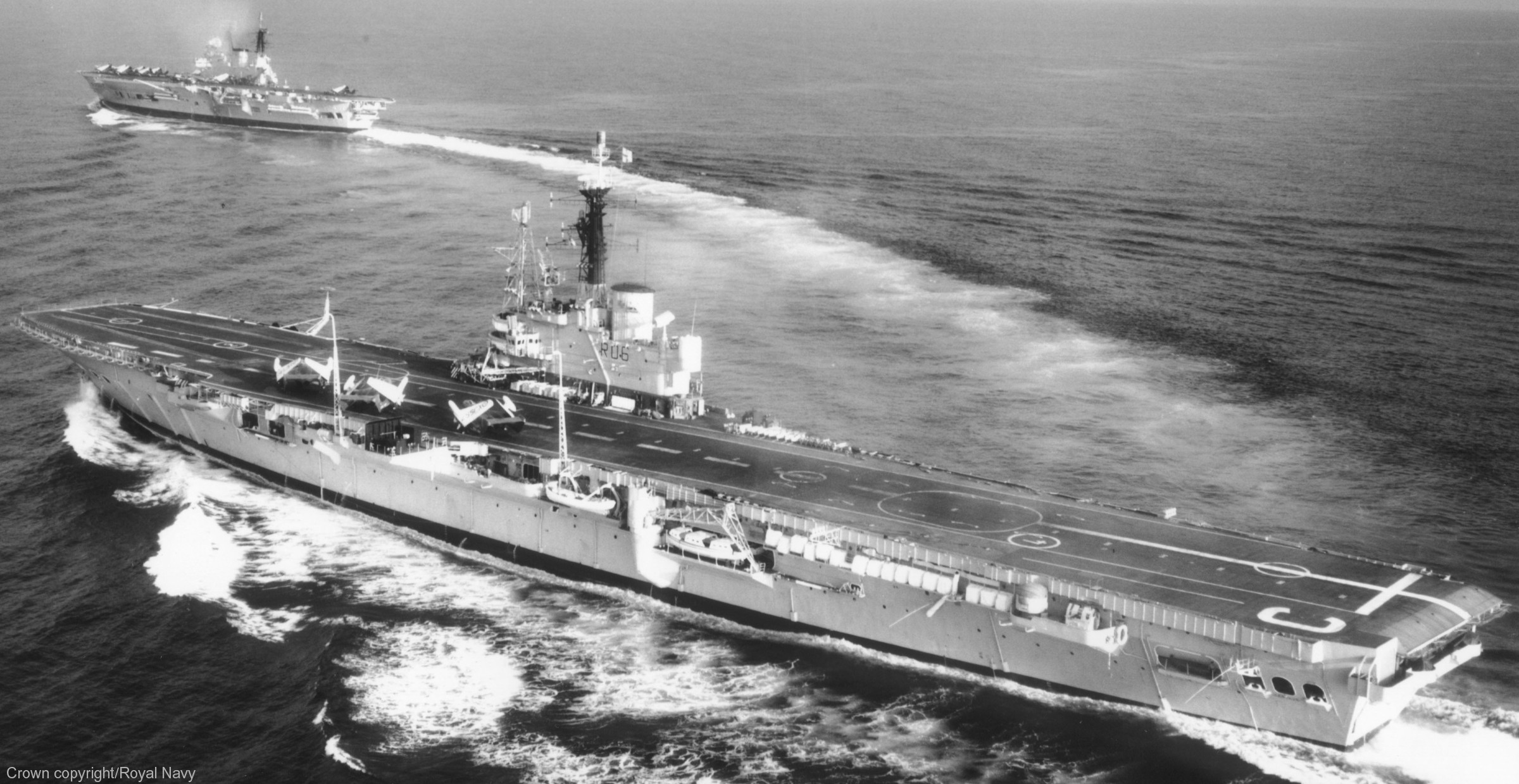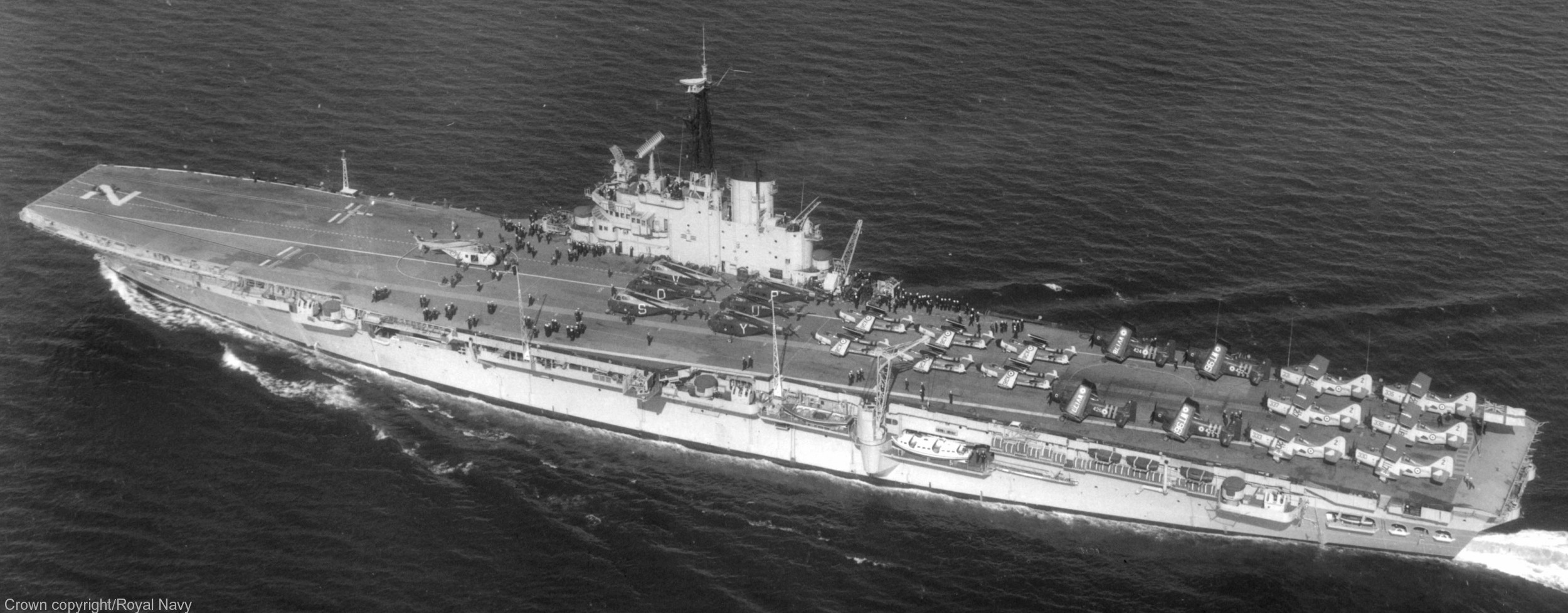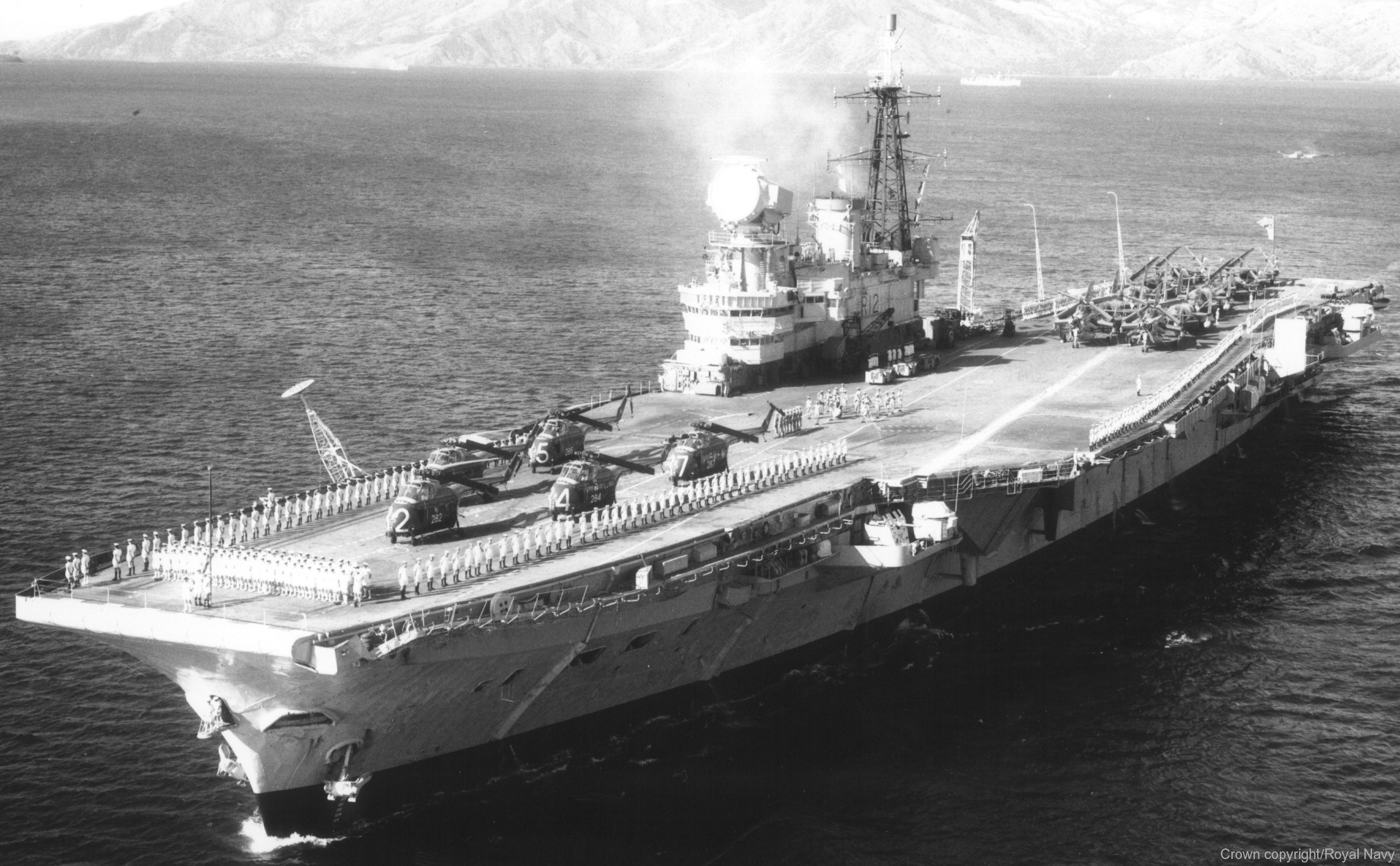|
|
|
HOME
|
US Navy -
ships
|
US Navy - air
units
|
USMC - air
units
|
International
Navies
|
Weapon Systems
|
Special Reports |
|
|
|
|
|
United Kingdom - Royal Navy Centaur class Aircraft Carrier |
|
|
 |
|
|
| Ships: |
|
R 06
HMS Centaur
(1953) R 07 HMS Albion (1954) R 08 HMS Bulwark (1954) R 12 HMS Hermes (1959) |
| Specifications: |
|
Length:
224,6 meters (737 ft)
Beam: 39,6
meters (130 ft)
Draft: 8,7
meters (28.5 ft)
Displacement: 28700 tons (full load)
Speed: 28
knots (52 km/h), max.
Range: 7000
NM (13000 km) at 18 knots (33 km/h)
Complement:
1390 (incl. air group)
Propulsion:
2 x
shaft geared steam turbines
4 x Admiralty 3-drum boilers
78000 Hp (58000 KW)
Aviation: full flight deck & hangar for up to 42 aircraft |
|
|
|
The Centaur class of aircraft carriers of the Royal Navy was the
last of the light fleet carrier designs started during the closing
years of World War II. The first of four of the class was
commissioned in 1953 and the final, decommissioned in 1984. The
first three ships lacked an angled flight deck and were therefore
unsuitable for fast jet aircraft, and production of a second four
carriers in the class was cancelled. History: Originally conceived as a class of eight vessels, with the end of hostilities, work on all the ships was suspended and four units Monmouth, Polyphemus, Arrogant and Hermes were cancelled outright. The four remaining vessels remained uncompleted for the best part of a decade. The earlier light fleet carriers of the Colossus and Majestic classes were completed before work resumed on the larger ships. With the extended completion periods of the units, and the rapid advances in aircraft carrier design at the time of their building, it was almost inevitable that large differences should be seen between the various members of the class. Centaur, the first to be completed, was commissioned in 1954. The ship had an axial flight deck and was thus unsuitable for operating the jets then rapidly supplanting piston engine aircraft in the Fleet Air Arm. Centaur was commissioned in Belfast and after completing her sea trials, she then steamed into Portsmouth Dockyard and for the next six months in 1954 the ship underwent a substantial reconstruction to provide for an interim (angled at 4 degrees, and not sponsoned out) angled flight deck and low powered steam catapults. However, service in this new configuration did not last long and the ship was decommissioned in 1965, but used as a harbor accommodation ship for a further 6 years. Conversion to a "commando carrier" configuration was cancelled in 1966. Albion and Bulwark, the next two members of the class, completed spent their lives inextricably linked. They both took part in Operation Musketeer, during the Suez Crisis, and they were both later converted into commando carriers. In this role, instead of carrying fast jets, they carried helicopters and marines. They were worked hard in the 1960s, (and not well maintained), with each taking turns deploying 'east of Suez' to the Far East Fleet. The link was broken when Albion (needing an expensive refit) was decommissioned in 1973. Bulwark lingered on a few years longer until 1976. However, in early 1979, Bulwark was recommissioned in the anti-submarine role. It was only a short commission though as a mess deck fire in 1979, and an engine room fire in 1980 finally saw the old ship withdrawn from service. She was rapidly surveyed during the Falklands War for recommissioning, but determined to be in too poor a material condition. She was sold for scrap in late 1983. The final ship of the class started as Elephant, but renamed as Hermes, she had a longer service life than any of the others in British hands. Not completed until 1959, some 15 years after being started, Hermes incorporated a full angled flight deck and other changes compared to Centaur, Albion and Bulwark. After fulfilling the role of a light attack carrier for a number of years, Hermes was converted to a commando carrier to replace Albion in the early 1970s. However, a return to operating fixed-wing aircraft beckoned at the end of the decade. Hermes was fitted with a ski-jump to enable the ship to operate the new Sea Harrier aircraft then coming into service. In this role, the ship saw considerable action in the Falklands War, acting as the flagship of the aircraft carrier task force. Hermes finally left Royal Navy service in 1984, and was sold to India. As INS Viraat, the ship continues in active service as of 2015. Design: The Centaur class were intermediate in size between the Colossus and Majestic-class light carriers (but much more sturdy with significantly more sub-division in the hull compartments, as well as more powerful engines and a higher speed) and the Audacious-class fleet carriers. At first this did not prove to be a hindrance. However, as the 1960s progressed, and jets continued to get larger and heavier, the point was eventually reached where the Centaurs could not sustain a balanced air wing of conventional aircraft. Hermes survived the longest as a conventional carrier, even operating the Blackburn Buccaneer. However, Hermes was not large enough to operate the Phantom FG.1. In roles they were not originally designed for, the class also proved successful. The loss of Albion and Bulwark's helicopter capability was keenly felt in the Royal Navy for many years, until an effective replacement, in the form of HMS Ocean was commissioned in 1998. Hermes also performed sterling service as a platform for the Sea Harrier and made a vital contribution to the winning of the Falklands War, the largest naval conflict since 1945. source: wikipedia (2016) |
|
|
|
images |
 HMS Albion (R 07)  HMS Hermes (R 12) |
|
|
|
|
seaforces.org
|
Royal
Navy start page
| |
